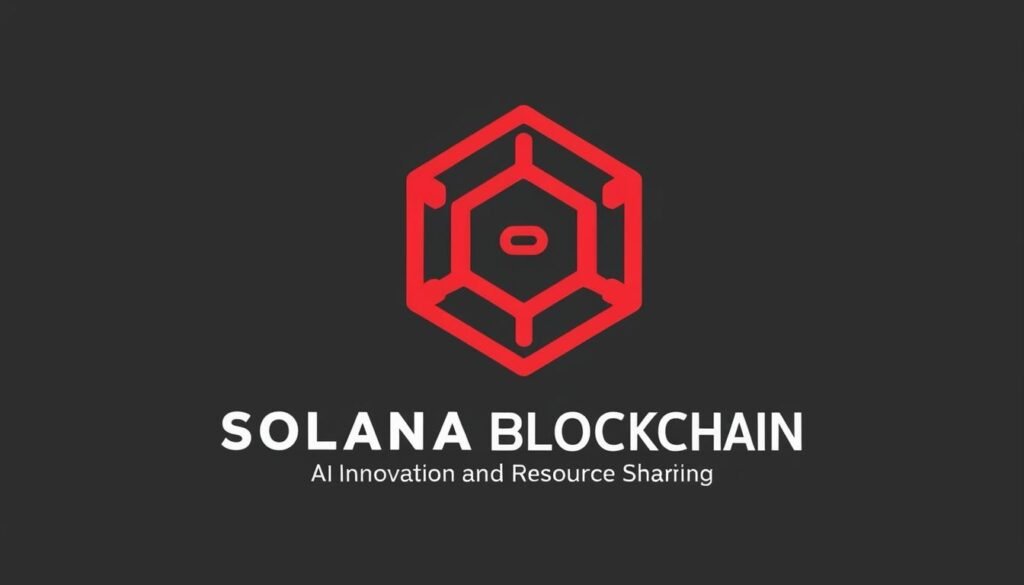The introduction of Render Network’s decentralised GPU infrastructure powered by Solana aims to democratise access to computing power for AI developers and 3D artists.
In recent months, the application of artificial intelligence automation across various industries has showcased significant advancements, particularly through the use of Decentralized Physical Infrastructure Networks (DePIN). One notable player in this evolving landscape is Render Network, which has introduced a decentralized GPU infrastructure powered by the Solana blockchain. This innovative platform aims to democratize access to computing power, making it more accessible for artificial intelligence developers and 3D artists around the globe.
With the increasing reliance on artificial intelligence, there has been a marked surge in demand for computational resources. Traditional systems struggle to keep up with this demand, prompting the rise of DePIN solutions that facilitate the sharing of underutilised resources. Render Network’s platform operates similarly to Airbnb, where individuals can share their idle graphics processing units (GPUs) to earn rewards while others can access these resources on demand.
The significance of this development is magnified by institutional interest, exemplified by VanEck’s recent investment of over $10 million in Solana’s DePIN project dubbed DAWN. An established investment fund manager, VanEck has shown confidence in the growth potential of DePIN, having previously invested in Solana earlier this year, which contributed to a notable spike in its token price. Analysts speculate that forthcoming plans for a Solana-based Exchange Traded Fund (ETF) could further bolster the token’s market position, heightening bullish sentiments among traders.
The DePIN Compute system aims to address the escalating demand for AI computational power by enabling users to monetize their unused GPUs. The platform facilitates a decentralised model where developers, researchers, and startups can access robust GPU resources without the financial burden typically associated with high-performance computing solutions. This setup not only allows GPU owners to generate income but also promotes a more efficient utilisation of available resources, paving the way for smaller entities to thrive in a competitive environment.
Technical insights from the market reveal that Solana appears to be on the cusp of a breakout, following the formation of a falling wedge pattern—commonly interpreted as a bullish reversal signal. Support levels around $215 have been reaffirmed, suggesting that further upward movement is on the horizon. Analysts posit that SOL could potentially reach new all-time highs by the end of the year, with optimism reinforced by the robust framework established by the DePIN initiative.
The emphasis on leveraging blockchain technology highlights its potential to streamline the sharing and use of computing power, making it both fast and cost-effective. Initiatives like Render Network’s efforts and VanEck’s substantial backing are crucial in redefining how computing resources are managed and incentivised.
Overall, as the fields of AI and decentralised infrastructure continue to evolve, the integration of automation and cutting-edge technology is set to drive significant growth across multiple sectors, shaping the future landscape of resource allocation and technological advancement.
Source: Noah Wire Services
- https://insights.blockbase.co/render-network-a-pioneer-in-decentralized-gpu-rendering/ – Corroborates Render Network’s decentralized GPU infrastructure and its operation on the Solana blockchain, as well as the platform’s peer-to-peer marketplace for GPU rendering power.
- https://coinbureau.com/review/render-network-review/ – Supports the concept of Render Network allowing individuals to monetize their idle GPUs and access computational resources on demand, similar to Airbnb.
- https://rendernetwork.com – Explains how Render Network harnesses idle GPU power worldwide, providing near-limitless rendering capacity at a fraction of the usual cost.
- https://insights.blockbase.co/render-network-a-pioneer-in-decentralized-gpu-rendering/ – Details the migration of Render Network to the Solana blockchain and its focus on AI and machine learning applications.
- https://coinbureau.com/review/render-network-review/ – Provides information on Render Network’s blockchain technology, its native token RNDR, and the decentralized global network for 3D rendering.
- https://rendernetwork.com – Highlights the benefits of Render Network, including fast, elastic, and affordable rendering capabilities through decentralized supply.
- https://insights.blockbase.co/render-network-a-pioneer-in-decentralized-gpu-rendering/ – Describes the Proof of Render (POR) consensus algorithm and the reputation-based system for Node Operators on Render Network.
- https://coinbureau.com/review/render-network-review/ – Mentions the efficiency and scalability of Render Network in managing computational scale and preventing overloads.
- https://rendernetwork.com – Discusses the support from the Render Network Foundation and the community involvement in the project.
- https://insights.blockbase.co/render-network-a-pioneer-in-decentralized-gpu-rendering/ – Explains how Render Network facilitates payments and transparent transactions through its blockchain infrastructure.
- https://news.google.com/rss/articles/CBMibkFVX3lxTFBBUDlGMWprZ3RvSlhIQVNCVGg4Q0tUdDRObFFWLURrS205LWNXbzk5NmpJalIwZkMyX215dGxlTGF4SnlIVEVzdmg5bW9GNVdBcjZieXFJWmRVeGZHTldkRVl1OGo3VDRwZlAwYS1R?oc=5&hl=en-US&gl=US&ceid=US:en – Please view link – unable to able to access data


